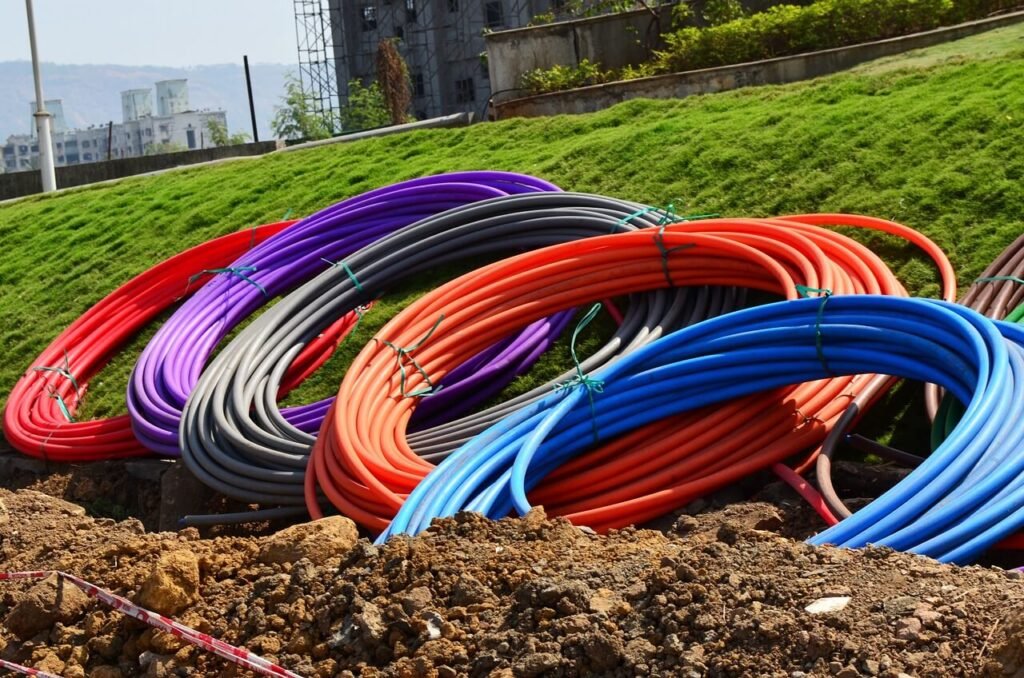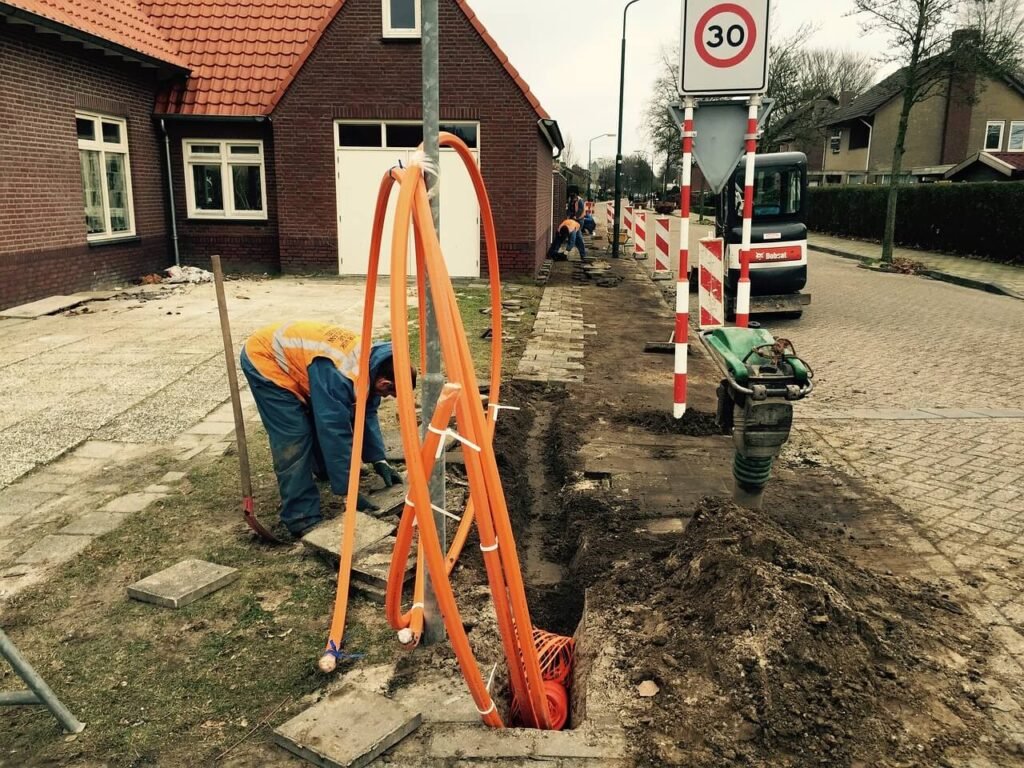Introduction
The digital landscape has undergone a seismic shift, accelerated by the global ramifications of the COVID-19 pandemic. The proliferation of remote work, online education, and virtual interactions has heightened the demand for ubiquitous and high-speed internet connectivity. This surge in demand, coupled with rapid technological advancements, underscores the critical need for robust fiber-to-the-home (FTTH) networks.
Recognizing the pivotal role of internet infrastructure in fostering economic growth and societal development, governments worldwide have intensified efforts to expand broadband access. Through various funding mechanisms and policy initiatives, such as the Digital Single Market in the European Union, policymakers aim to incentivize investment and ensure equitable access to fast internet services.
However, the deployment of FTTH networks presents multifaceted challenges, particularly in remote or underserved areas. Complexities surrounding infrastructure investment, regulatory compliance, and stakeholder engagement necessitate meticulous planning and strategic decision-making by telecom industry leaders.
In the following discussion, we delve into examples of successful business models that have effectively addressed the challenges of FTTH deployment in various parts of the world. These case studies offer valuable insights into effective strategies and best practices, fostering scalable and sustainable network expansion.

Open-Access Networks
The Open-Access Network paradigm represents a transformative approach in telecommunications, fundamentally altering conventional network structures and service provision. This innovative model fosters collaboration among multiple service providers operating within a shared physical infrastructure, cultivating an ecosystem of robust competition and continual innovation. At its core, “Open Access” emphasizes the strategic separation of physical network access from service delivery, ensuring equitable access and fostering consumer choice.
There are two primary models within the Open-Access Network framework: the Two-Layer Model and the Three-Layer Model. The former involves an owner-operator overseeing the physical infrastructure while multiple retail service providers deliver services over the network. Meanwhile, the Three-Layer Model features distinct entities for infrastructure ownership, operations, and retail service provision. This adaptable approach, applicable to various network configurations including pure fiber, Wi-Fi, or hybrid systems, is particularly beneficial in low-density or rural areas where attracting ISP investment proves challenging.
Several real-world examples showcase the success of Open-Access Networks, such as the Vasteras OAN in Sweden, Stokab in Stockholm, Sweden, The Wired Road in Virginia, US, and Crown Fibre Holdings in New Zealand. These initiatives demonstrate the feasibility and efficacy of the Open-Access model, with some focusing on specific network segments like the “middle mile” or “last mile,” while others offer comprehensive coverage.
By confronting the challenges posed by monopolistic practices and limited service options, the Open-Access Network model promotes competition and innovation in the telecommunications sector. It serves as a catalyst for transformative change, heralding a future characterized by neutrality, choice, and connectivity. In an era defined by rapid technological evolution, the Open-Access Network model stands as a beacon of progress, driving forward the quest for a more inclusive and dynamic digital landscape.

Public-Private Partnerships (PPPs)
Public-Private Partnerships (PPPs) play a pivotal role in the deployment of Fiber-to-the-Home (FTTH) networks, fostering collaboration between governmental bodies and private entities to accelerate broadband expansion. While PPPs are commonplace across various industries, including utilities and infrastructure, their application in telecom deployments highlights their effectiveness in tackling connectivity obstacles.
Among the notable success stories, the partnership between Google Fiber and the city of Huntsville, Alabama stands out. This collaboration exemplifies how joint efforts can expedite FTTH deployment, showcasing the potential of PPPs in narrowing the digital divide and enhancing community connectivity.
In Virginia, the Broadband Summit Case Studies offer compelling insights into the transformative impact of PPPs. Bland County’s collaboration with Gigabeam Networks overcame challenges posed by mountainous terrain through a fixed wireless solution, showcasing the power of innovative partnerships in expanding broadband access.
Similarly, Prince George County’s alliance with Prince George Electric Cooperative (PGEC) addressed rural connectivity gaps by deploying fiber and leveraging existing infrastructure. Accomack and Northampton Counties’ partnership with the Eastern Shore of Virginia Broadband Authority (ESVBA) highlights the collaborative efforts to overcome geographic isolation, deploying nearly 320 miles of fiber through a blend of local funding, federal grants, and strategic investments.
These examples underscore the versatility of PPPs in deploying telecommunication infrastructure, leveraging local investments, and fostering creative funding mechanisms to enhance broadband access. By championing open access networks and fostering mutually beneficial agreements, PPPs serve as catalysts for advancing broadband connectivity and fostering inclusive digital ecosystems.

Community Networks
Community Networks represent grassroots initiatives where local communities govern and manage network infrastructure for digital communication. Built on the principle of open commons, these networks are collectively owned and operated by community members and organizations, pooling resources to establish connectivity. Whether through wireless or wired connections, community networks empower residents to stay connected, conduct business, and access educational resources.
The significance of community networks lies in their ability to address connectivity gaps in areas overlooked by traditional telecom providers or government initiatives. Often deployed in rural or remote regions with low population density, or informal urban settlements, community networks fill the void left by commercial services that find such areas unprofitable or cost-prohibitive. Moreover, community networks can serve as affordable alternatives to traditional providers, offering autonomy and resilience against disruptions in commercial networks.
Chattanooga, Tennessee, stands as a beacon of successful community-driven connectivity with EPB, its municipally-owned electric utility, spearheading the deployment of a city-wide fiber-optic network. This transformative initiative not only attracted investments but also propelled Chattanooga into the realm of gigabit cities, showcasing the potential of community-driven connectivity to bridge digital divides and foster inclusive digital ecosystems.

Wholesale-First Approach
The ‘wholesale-first’ approach represents a strategic shift in network deployment, where operators prioritize selling wholesale access to their infrastructure. This model fosters collaboration between network operators and internet service providers (ISPs), facilitating the delivery of high-speed broadband to end-users.
A prominent exemplar of the ‘wholesale-first’ approach is the CityFibre project in the UK. Since its inception in 2011, CityFibre has embraced a wholesale-only model, forging partnerships with ISPs to expand fiber-optic networks in small UK cities. One notable instance is the collaboration with retail broadband providers TalkTalk and Sky to establish a 1 Gbit/s capable fiber network in York. Through prepayment commitments and customer migration plans, TalkTalk and Sky solidified the project’s business case, demonstrating the viability of the wholesale-first strategy.
Furthermore, CityFibre’s partnership with UK mobile giants Vodafone exemplifies the efficacy of the wholesale-first approach. Under an exclusivity contract, Vodafone guaranteed a 20% take-up of a 1 million household FTTH footprint, providing stability and security for investment. This model allows access takers like Vodafone and TalkTalk the flexibility to design downstream/upstream speed profiles, enabling them to upsell high-speed access to retail customers without incurring excessive wholesale costs.
The ‘wholesale-first’ approach not only fosters collaboration and stability in the market but also enables ISPs to differentiate themselves from incumbents like BT OpenReach. By prioritizing wholesale access, operators like CityFibre empower ISPs to deliver cutting-edge broadband services, driving innovation and connectivity in the digital landscape.
There are additional models that have been highly successful and are attracting investments. An intriguing post on this topic was covered by the Fiber Connect Council MENA.
Conclusion
In conclusion, as the demand for high-speed internet connectivity continues to surge, the imperative for robust fiber-to-the-home (FTTH) networks becomes increasingly evident, especially in light of the transformative effects of the COVID-19 pandemic on the digital landscape. Governments worldwide are spearheading initiatives like the Digital Single Market in the European Union to drive broadband expansion and ensure universal access. Amidst the complexities of FTTH deployment, successful business models such as Open-Access Networks, Public-Private Partnerships (PPPs), Community Networks, and the Wholesale-First Approach offer valuable frameworks for overcoming challenges and promoting inclusive connectivity. Our team stands ready to provide significant support in market analysis, survey, design, planning, and documentation of FTTx and Mobile networks, ensuring efficient and effective network deployment in the digital era
